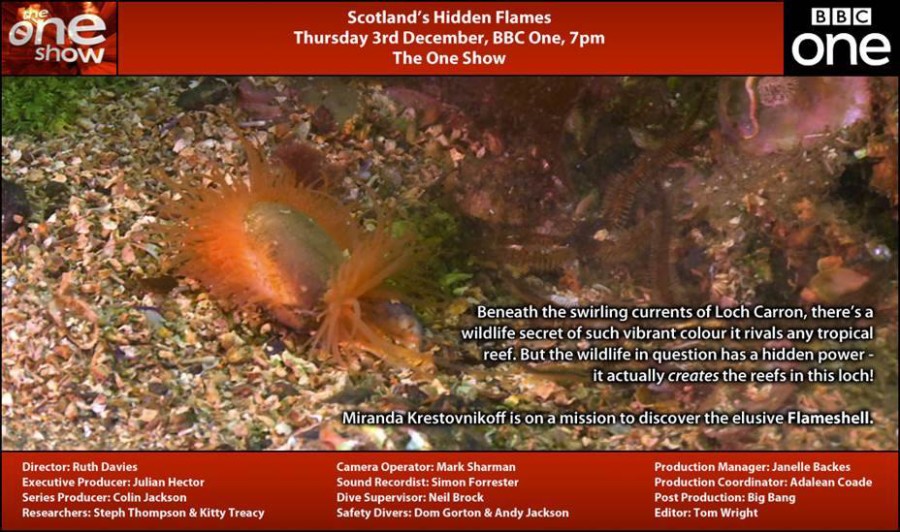A closer look at Plankton
Posted on May 11, 2016
Plankton is the building block of all life in our oceans. Most animal stories I explore make reference to it at some point, so I decided to try and film it.
Thing is, plankton’s usually viewed with a microscope, so I had to get into serious macro to capture clear images. With helpful advice from Steve Trewhella, I built the kit I needed and caught some zooplankton.
This sequence will be my bench mark for future improvements. I’m going to keep exploring this tiny alien world. I’ll share more incredible images with you as I have them.
With thanks to Steve Trewhella, my son Freddie, Pete Bridgewood, Scarborough Sub Aqua Club, and Moby Gratis for “Snowball” from the album “Hotel Ambient”.
______________________
Images and words by Andy
Dead man’s fingers – Alcyonium digitatum
Posted on April 18, 2016
During March, I spent two weeks filming in the clear waters of Loch Carron.
When I set out, I didn’t know what I was going to find at this time of year. I decided to go, see what turned up, and let my curiosity do the rest.
I started on the flame shell reef but found it to be barren of life, dull brown in colour, and devoid of the colourful seaweed that shelters summer residents. I tried a night dive but the results were no different.
As I swam to the flame shell reef every day, I passed close to a vertical wall. Here, dead man’s fingers (DMFs), one of the UK’s most common soft corals, fed with their polyps out in the tide. They varied in colour from white to deep orange and looked beautiful against the emerald green water.
On closer inspection I found most of the life I’d expected to see on the flame shell reef in amongst the DMFs. At this time of year this is clearly the preferred habitat. Most of the animals were small and so to capture macro images, I needed to keep my camera rock solid. This restricted me to the bottom metre of the wall where I could work off a tripod on the seabed.
After the first week I had filmed some interesting life like the tiny amphipod Iphimedia obesa but the animal that interested me most remained tantalisingly out of reach. Tritonia hombergii (DMF sea slug) was breeding, feeding and teasing me, high up on the wall, beyond the range of my tripod. The few shots I captured were static as Tritonia live out their lives in a time frame that is much slower than ours.
Back home, reviewing my footage, I decided that to complete this story, I needed to film Tritonia in a different location (not a wall) and use time-lapse to speed up their behaviour.
I talked to Sue Scott, George Brown and Mark Skea and it became clear that a few hundred metres from Strome, Conservation Bay could offer what I needed. Here DMFs populate the seabed in great numbers and Mark had seen Tritonia amongst them the week after I had dived at Strome.
So it was back to Loch Carron again. A scottish diver called Willie Stuart introduced me to Conservation Bay and the Tritonia. They were doing everything I had hoped for – but very slowly. It took a full week diving twice a day but time-lapse has enabled me to capture how they move and feed and how DMFs react to them.
So now I have a story that looks at a typical day in the life of the UK’s most common soft coral. Follow the video link and have a look at them, the habitat they create, and the animals that depend upon it.
After watching this I hope you’ll agree that the name Dead Man’s Finger doesn’t really capture the magic of this animal, and that we should be very proud of the amazing coral reefs we have all around our UK shores.
Special thanks to Sue Scott for all her help.
______________________
Images and words by Andy
Sea Toad – Hyas coarctatus
Posted on March 14, 2016
Sea toads, Hyas coarctatus, or Greater Spider Crabs, fascinate me. They seem to love climbing high on the kelp to feed in nutrient rich tidal flows. Gangly legs get them up there without much effort, but in this short film you’ll notice one crab find its limit on a bare rock face.
I found a mating pair – in a strange and unusual mating ritual which looks a little like Tai Chi. It happens face to face, unlike most others crabs where the female is hidden beneath the male.
These clips were filmed at North Strome, Loch Carron in late February 2016. Hope you enjoy!
______________________
Images and words by Andy
A Common Sunstar encounters a Rugose Squat Lobster
Posted on February 25, 2016
This is another short sequence of clips from February 2016, filmed at North Strome in Loch Carron.
Some of this encounter has been speeded up to make it more viewable. I don’t think the squat lobster was ever at risk, but it is interesting to see this slow speed collision.
______________________
Images & words by Andy
Scotland’s Hidden Flames
Posted on February 23, 2016
In June 2015, I worked with BBC One Show and Miranda Krestovnikoff to produce this 5 minute short film. The film was set in North Strome, Lochcarron and was tremendous fun – what a lovely team to work with. I appear as contributor talking to Miranda – and much to her delight we found a flame shell under the first bit of reef I turned over. You’ll also see lots of my stock footage covering key bits of the story.
The film went out on 3rd December. If you missed it first time around, here’s another chance to see it: Link to film

